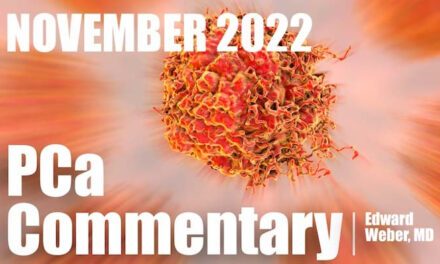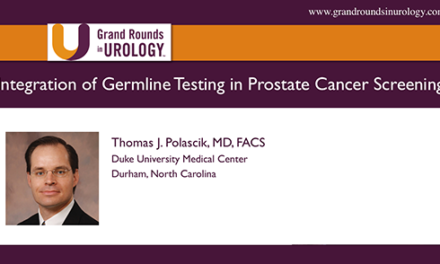Samir S. Taneja, MD, presented “Management of Men With PI-RADS 4-5 Lesions and Negative Biopsy” during the 25th Annual Southwest Prostate Cancer Symposium conference on December 9, 2021, in Scottsdale, Arizona.
How to cite: Taneja, Samir S. “Management of Men With PI-RADS 4-5 Lesions and Negative Biopsy.” December 9, 2021. Accessed Nov 2025. https://grandroundsinurology.com/management-of-men-with-pi-rads-4-5-lesions-and-negative-biopsy/
Management of Men With PI-RADS 4-5 Lesions and Negative Biopsy
Samir S. Taneja, MD, Professor of Urologic Oncology at NYU Grossman School of Medicine, discusses how to approach a negative MRI-targeted prostate biopsy in men with PI-RADS 4 or 5 lesions, explaining both why an MRI-targeted biopsy for a high suspicion MRI might be benign and what steps to take to determine the biopsy’s accuracy. Citing the PROMIS study, he notes that MRI is not entirely accurate and has neither a perfect positive predictive value (PPV) nor a perfect negative predictive value (NPV), though PPV is better at Gleason Grade greater than or equal to 3+4. Dr. Taneja then lists factors influencing PPV of MRI/template biopsy, including the given definition of clinically significant prostate cancer (csPCa), indication for biopsy, the prevalence of disease in the sampled cohort, and biopsy technique/operator skill. He goes into depth on how the MRI-targeted biopsy technique might influence the likelihood of a false negative, noting how the PROFUS study showed that csPCa was more often found with fusion biopsy compared to visual targeting. Dr. Taneja also considers the significance of the number of cores taken, observing that while most men are diagnosed with csPCa in the first core, there is a subset that requires core 3 and 4. He synthesizes the data into a set of suggestions for a clinical approach to a negative MRI-targeted biopsy in the setting of PI-RADS 4-5 abnormality, stating that clinicians should assess how confident they should be in the biopsy, assess the accuracy of imaging, repeat imaging in 6-12 months to rule out a false positive and, if the abnormality persists, they should perform a repeat biopsy.
About the 25th Annual Southwest Prostate Cancer Symposium:
Presented by Program Chairs Nelson N. Stone, MD, and Richard G. Stock, MD, this conference educated attendees about advances in the management of localized and advanced prostate cancer, with a focus on imaging, technology, and training in the related devices. It included a scientific session, as well as live demonstrations of surgical techniques. You can learn more about the conference here.
ABOUT THE AUTHOR
Samir S. Taneja, MD, a surgeon whose long career has been spent in driving innovation in urologic cancer diagnosis and treatment, especially prostate cancer, has been selected to lead Northwell Health’s urology service line. Dr. Taneja has been appointed the senior vice president and chair of urology at Northwell Health and the chair of the Smith Institute for Urology. Previous to his position at Northwell Health, Dr. Taneja spent 29 years at NYU Langone Health, most recently serving as vice chair of the Department of Urology, director of the Division of Urologic Oncology, and a professor of urology and radiology at the medical school, as well as professor of bioengineering at the NYU Tandon School of Engineering.
The work that Dr. Taneja conducted at NYU Langone and its Perlmutter Cancer Center and Smilow Comprehensive Prostate Cancer Center has transformed the field of prostate cancer diagnosis and treatment by improving methods of prostate imaging, cancer detection, and disease localization. Dr. Taneja strives to integrate new technologies into his practice to evolve the practice of oncology. This has allowed him to care for prostate cancer patients individually by avoiding surgery or radiation when not needed, and using new targeted approaches to treat the disease when possible.
Dr. Taneja’s clinical research focuses on the use of imaging to detect and treat prostate cancer. He pioneered the use of MRI to diagnose and pinpoint prostate cancer, and in MRI-guided focal ablative therapies that aim to destroy the only cancerous portion of the prostate. Dr. Taneja has authored more than 200 articles, 30 book chapters, and 6 textbooks and monographs on urologic cancer and surgery. In addition, he is the editor of Taneja’s Complications of Urologic Surgery: Prevention and Diagnosis, one of the most widely read textbooks in American urology.





